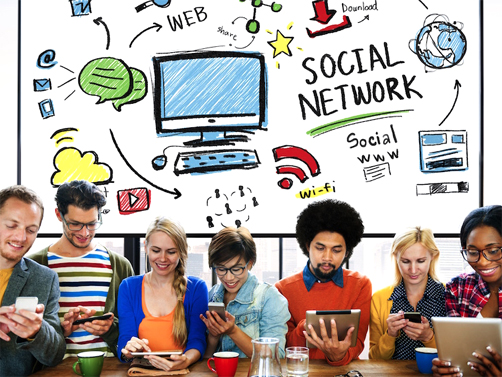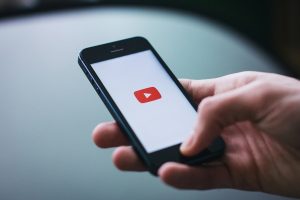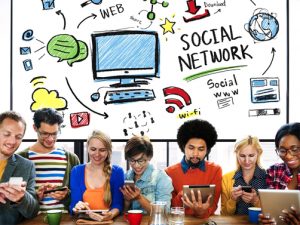Millennials, conquering brands


The title sounds like a Martian invasion, but we are not talking about the future but about the present, and not about Martians, but about a real niche population that brands are trying to seduce at all costs as potential consumers and influencers.
Millennials are currently aged between 20 and 37 years old approximately (considered those born between 1981 and 1995), and they represent a huge mass that is of great interest to companies due to the large volume of business they generate, estimated at 1.3 million dollars per year according to the Boston Consulting Group.
Not only for their consumption, but also for their assessment and experience of a product or service in real time. Most of them live hyper-connected to their smartphones, have an account on one or more social networks, consume more and more in e-shops, contract and manage services through the Internet: banks, holidays, etc....
That is why they are considered digital natives, born with new technologies under their arms and in constant evolution"! They know the new media and forms of communication better than anyone else and they are "fish in water" on the net.
This generation, the first fully digital generation, is the headache of many marketers in marketing campaigns. email marketingYes, you read that right! What was not predictable is that the email to remain a means of communication among Millennials, especially since the emergence of social networks.
But email remains a successful channel for communicating with each other, and they are also receptive to receiving commercial information, understood as a vehicle between the brand and the consumer.
 A good idea for a marketing campaign, for example, would be to send out emails with video - the most consumed content on the Internet - and that as soon as they were opened, it would play automatically.
A good idea for a marketing campaign, for example, would be to send out emails with video - the most consumed content on the Internet - and that as soon as they were opened, it would play automatically.
Surprising for the recipients and for us, as the content may be shared on their social networks and increase traffic to our website or landing page.
But first you have to get to their motivations, what drives them to buy or share content, you have to go deep into their insights, dive into the emotions of the ocean of their mind.
Remember: Millennials can make your brand sail successfully, refloat it or...Sink it!
Search for insights and micro-segment.
In an era where information and communication technologies are in continuous transformation, and with every click there is a greater presence and competition from brands on the Internet, getting the interest of the audience in general - and of this group in particular - is a complicated task, but not impossible!
It is therefore important not only to analyse their consumption habits, the devices used, forms of expression... but also to delve into their 'insights': their desires, their concerns, their interests, or their emotions. Non-tangible aspects that underlie their motivations.
It is a trend that is studied from the NeuromarketingOur "reptilian brain", the most primitive area, is driven by non-conscious impulses, works by the stimulus-response mechanism, and is strongly influenced by the limbic brain, where emotions are housed.
Emotions are the brain's unconscious and automatic responses to sensory stimuli: The smell of a perfume, the sight of an ocean... everything triggers an unconscious emotional response.
It is not possible to establish a single profile of Millennials, but they are characterised by certain "emotional" traits: Impulsive, impatient, critical, demanding and volatile.
These young people are customers who are not just looking for good service, but expect brands to adapt to their preferences, take into account their tastes and personalise their products or services... Their purchasing decisions no longer respond so much to stimuli such as price or the goodness of a product... They prefer experiences!
Experiential marketing has permeated strategies because it appeals to emotions as a decisive factor. All the information gathered will be very useful to establish segmentation parameters. A good detailed segmentation would be based on urban tribes or groups with similar tendencies, united by the same lifestyle, leisure, consumption and tastes.
For example, if you want to carve out a niche for yourself among manga publishers, you will have to first investigate what type of public is a reader, what they are like, their consumption habits, their tastes or hobbies. In this case, it would be a good idea to delve into the insights of the Otaku, one of the Japanese urban tribes that has become most popular among young people.
Knowing how to stimulate the senses and arouse the emotions of Millennials will determine the impulse to buy and brand recall.
Loss aversion
A key fact is the fact that: 95% of our purchasing decisions are unconscious. The final decision is not as rational as we thought... That which motivates and drives us enters us through different stimuli to the senses, which in turn awakens in us an emotion that drives us to action.
Millennials are highly irrational, if they like something they go for it. And that impulse is related to the possibility of receiving "instant gratification", rather than necessity.
Two of the most influential drivers of decision making are pleasure seeking and pain avoidance. What is known in neuromarketing as "loss aversion", most people react to fear, loss avoidance and the threat of pain in a much more profound way than they do to profit or gain.
It seems somewhat contradictory, but the emotional part of our brain is more focused on not getting hurt, on the need to feel good when making decisions.
So we ask ourselves, which emotions to stimulate? Some of the ones that work best are: happiness, nostalgia, fear, scarcity, urgency, ego or belonging. Strategies based on fear or scarcity, alluding to a possible loss of product acquisition, are successful among young people.
A good example is the recent strategy of Snapchat's Spectacles, one of the most successful social network among Millennials.
The key is to artificially generate scarcity by offering a limited number of units per day of these lenses equipped with two small cameras that record self-micro videos at the touch of a button and without having to manipulate the mobile phone.
They also never announce how many glasses will go on sale or where they will sell them until a few hours beforehand on their Twitter microblogging account, where they play a hint hours before setting up a special dispensing robot.
Their formula for success? Scarcity + uncertainty + curiosity + community + fun = Conversion to big sales and making the item, an object of desire.
The smartphone: a new form of entertainment
Smartphones are winning out over the rest, for example, "85% of US Millennials own a smartphone", according to data from NielsenThe mobile world, a percentage of users who are connected, means that communication with them must be prepared for the 'mobile' universe.
54.1% of young people up to the age of 24 say they look at their mobile phone more than 10 times an hour.
In this digital age of one-click consumption, Millennials do not miss the opportunity, as they are used to being connected practically all day long and the visibility and immediacy provided by their screens reinforces their impulsive consumption.
Technology and devices have influenced young people's entertainment. According to the digital marketing agency MRYthese tend to use their smartphones as part of his daily free time and there are many of them, a 66%, those who use their devices to access different leisure activities.
Consume, consult, buy and share
Following on from the previous case of the most desired glasses, it has been found that younger consumers do not feel disappointed if they do not get them or give up their search, but are attracted by the challenge and consider themselves special by being part of the group, sharing their experiences and boasting that they have them (a feeling of exclusivity).
At the emotional core, the strategy appeals to "fear of social rejection".. Snapchat has managed to respond to another  of Millenials' motivations, that of their desire to be admired and socially accepted and to feel part of "a community of the chosen ones".
of Millenials' motivations, that of their desire to be admired and socially accepted and to feel part of "a community of the chosen ones".
They like to interact in groups, chat, consult, buy and generate and share content. Yes, rather than the discourse of an advertisement, young people trust the recommendations and stories or experiences told online, rather than those of the brands themselves.
From 'I'm loving it' to 'I'm hating it'.
As they say, "from love to hate, it's one step", or one click! So you have to learn to understand the rules of the game with Millenials, as they are sensitive to their online experience.
They are also influenced by influencers, but they can also become great influencers themselves. Every negative comment or opinion can take away market share. The role of recommendation has taken on a major significance for a brand to achieve greater recognition.
So, how can we make sure that they don't eliminate us from their top list of favourites? As marketers, we will have to go to their favourite channels: social networks, websites, blogs, forums, applications, video channels... and maintain an active, direct and sincere listening and response.
Here are two interesting concepts to put into practice:
Storybuilding
According to Oriol Iglesias, director of the ESADE Brand InstituteIt is of no use what is told, the storytelling, if it is not built with facts. What matters is storybuilding, and building involves conversation and participation".
Flawsome
This curious term comes from putting the words together:
Flaw' which means imperfect + 'Awesome' which means unbelievable
It identifies brands that stand out for their imperfection, naturalness and proximity, factors that are important for reaching Millennials.
For example, when faced with a defective product or service, a more personal customer service, in order to understand the customer's situation and respond in the same channel, is very convenient and, above all:
NOT "opt for silence as a response".
This way we will have more chances of being viralised or included in their publications, generating content about us in the best case scenario.
In short, in order to reach Millenials and achieve the final action of them recommending us positively, it is highly advisable to first identify their motivations and anticipate their interests when launching a message.
The challenge is very interesting because of its spontaneity, and we will never be able to control their impulses, but we will be able to get closer to the target of their desires and with it, a greater success of conversions and engagement.